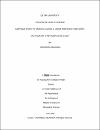National Study of Anaphylaxis in a Large Tertiary Care Hospital in Qatar: A Retrospective Study
| Advisor | Ibrahim, Hatem Z. |
| Author | Abunada, Taghreed |
| Available date | 2018-12-13T10:57:59Z |
| Publication Date | 2018 |
| Abstract | Background: Anaphylaxis is a serious systemic allergic disease that often mani-fests with a broad array of symptoms and leads to death if not immediately treated by the administration of epinephrine auto-injector (EAI). Aims and objectives: To assess EAI dispense as an indicator to estimate anaphylaxis in Qatar, to determine the common causes of anaphylaxis in Qatar, to dissect the clinical profile of patients, and to determine the comorbidity factors in patients with anaphylaxis in Qatar. Methods: A retrospective study conducted using 1,068 electronic medical records (EMR) of anaphylaxis patients through the period of 2012 to 2016. The majority of the patients were collected from dispensed EAIs of outpatients (622) and the remainder (446) were from ICD-10 codes. To assess the feasibility of using the dispensed EAIs as possible measure for anaphylaxis, we calculated the sensitivity and specificity of this test on our patients’ cohort (1,068). The demographics data, triggers, co-morbidity factors, symptoms, and clinical manifestations were catego-rized and thoroughly analyzed. Statistical analysis was performed with version 24 SPSS statistic software package. Results: The sensitivity of dispensed EAIs to detect anaphylaxis was 87.0% with positive predictive value (PPV) of 80%. There were 574 patients (53.5%) diagnosed with anaphylaxis, male to female ratio was 1.2, and 300 patients (77.9%) were less than ten years. Food was the leading trigger of anaphylaxis (n=316, 55.0%) followed by insect stings (n=161, 28.0%) and drugs (n=103, 17.9%). Asthma (n=208, 36.2%), atopic dermatitis (n= 195, 33.9%) and allergic rhinitis (n=81, 14.1%) were the common comor-bidity factors that significantly associated with anaphylaxis. Symptoms included 87.9% cutaneous, 69.1% respiratory, 47.5% gastrointestinal, 15.8% cardiac, and 8.8% neurologi-cal. Patients treated without the use of EAIs (n=143, 77.7%) were exposed to more serious adverse events including two deaths and one shock. Conclusion: This study will serve as a clinical guide for clinicians at allergic and pediatrics clinics and might be used as a base-line to assess the future trend of anaphylaxis in Qatar. |
| Language | en |
| Subject | Allergic disease epinephrine auto-injector Qatar |
| Type | Master Thesis |
| Department | Biomedical Sciences |
Files in this item
This item appears in the following Collection(s)
-
Biomedical Sciences [64 items ]


